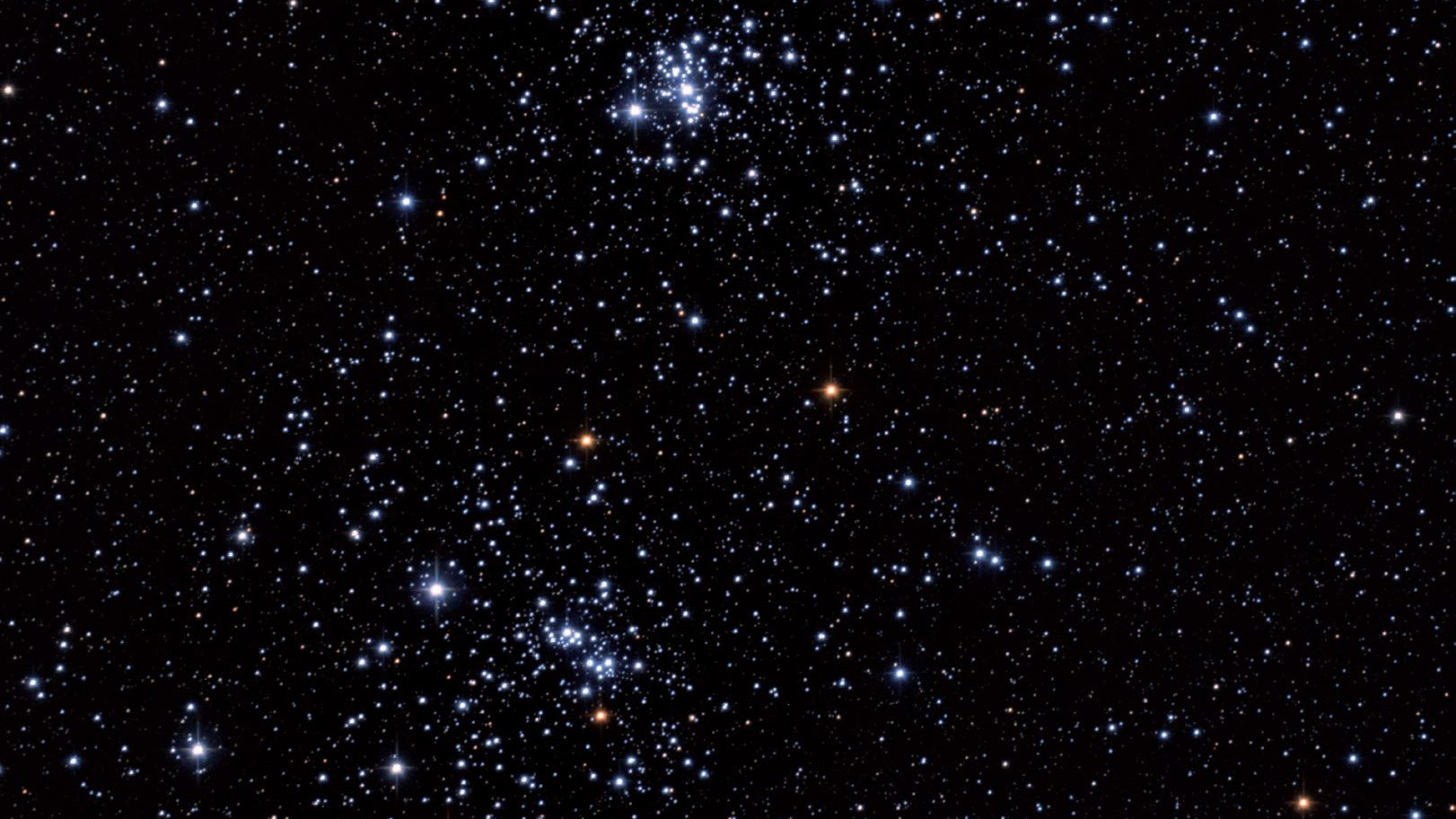A great show for small binoculars
Diamonds and bodybuilders - the Double Cluster in Perseus invites you to a binocular tour of the Milky Way!
 The pair of open clusters h and χ Persei, also known as NGC 869/884, is a great binoculars object thanks to its dimensions. Marcus Degenkolbe
The pair of open clusters h and χ Persei, also known as NGC 869/884, is a great binoculars object thanks to its dimensions. Marcus DegenkolbeSince the constellation of Perseus is located in the middle of the Milky Way, there are many interesting objects there, even for smaller binoculars. The most beautiful of them are high in the north, which is where our short tour takes us.
Double diamond
The pair of open clusters h and χ is undoubtedly the great highlight of this tour, which is visible with the naked eye as two small hazy balls between the top of Perseus and W-shaped Cassiopeia. But even through the smallest pocket binoculars, it becomes a swarm of glittering stars of varying brightness starting at around magnitude 6. A dozen stars can be counted through pocket binoculars, easily three times as many are visible through 10×50 binoculars. NGC 869, the more western cluster, appears a little more concentrated toward its centre.
Stars in a supporting role
Several open clusters that may be less spectacular, but are nevertheless worth visiting, are also to be found in the same field of view as this absolute classic. Around 2.5° to the south-east, an elongated group of stars consisting of one brighter star and 5 or 6 further stars is visible even through small binoculars.
Alternatively, you can find this open cluster, Trumpler 2, by starting at the northernmost main star of the figure of Perseus, η Persei, since it is located exactly 2° west of it. Just 1.5° east of the double cluster, directly beside a row of stars running from north to south, you will stumble upon a fuzzy patch, from which two weak stars are shining out on the southern edge: the open cluster NGC 957.
 The objects in this binoculars tour are all within an area of 5°, i.e. within a single field of view. J. Scholten
The objects in this binoculars tour are all within an area of 5°, i.e. within a single field of view. J. ScholtenThe heavenly bodybuilder
Around 2.5° north of the double cluster, just over the border with Cassiopeia, a swarm of stars of magnitude 8 and upwards reveals itself which, with a bit of imagination, form the shape of a stick figure lying on its side, around 0.5° across. Because its arms appear to be somewhat outstretched, this star cluster, which is catalogued as Stock 2, is also known as the Muscleman.
In addition to this high concentration of interesting binocular objects in a very small area, Perseus also has a number of other highlights for small optical devices. So it’s always a worthwhile destination; either for a spontaneous visit, or for a pre-researched night of observing!
Author: Kay Hempel / Licence: Oculum-Verlag GmbH
